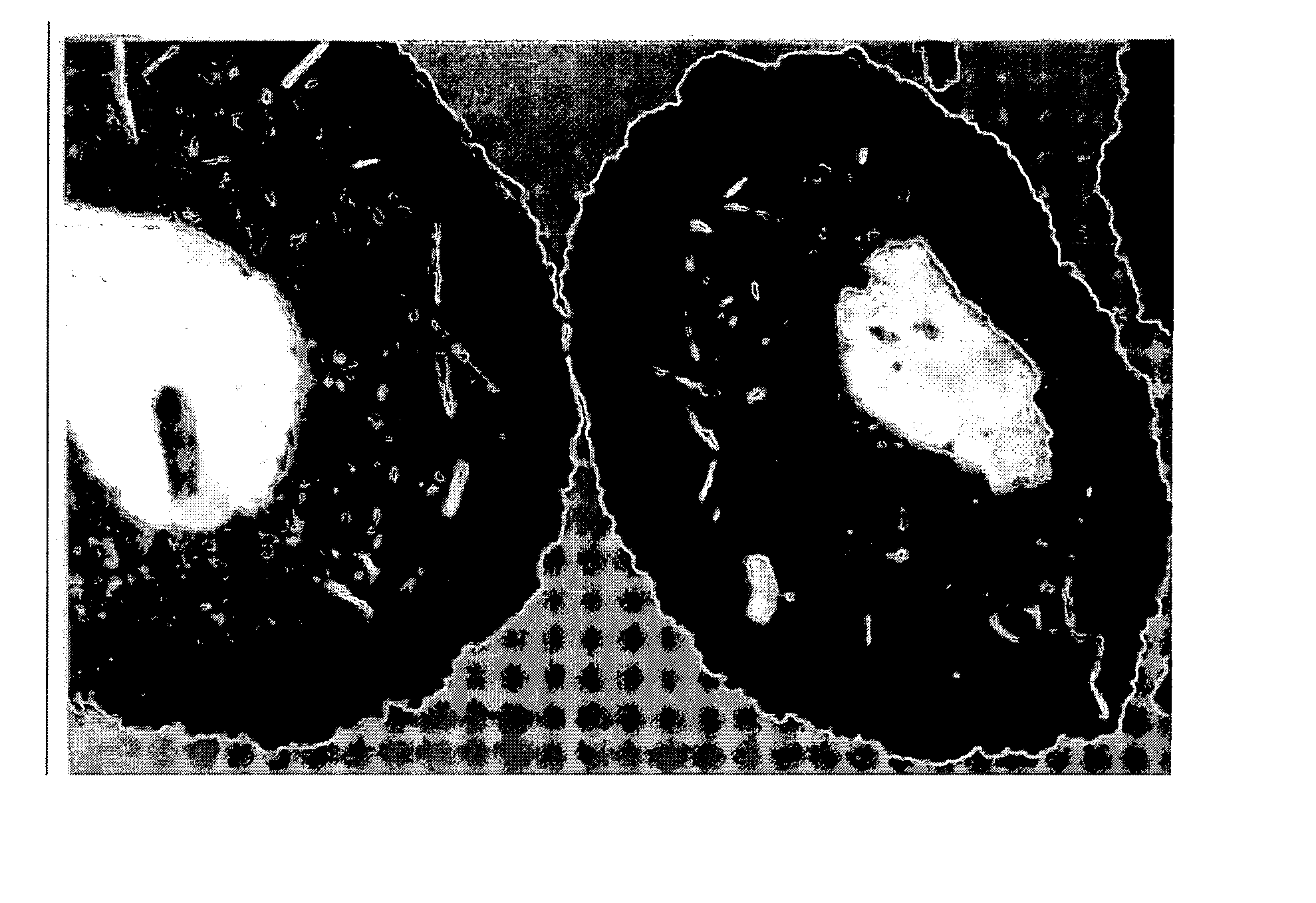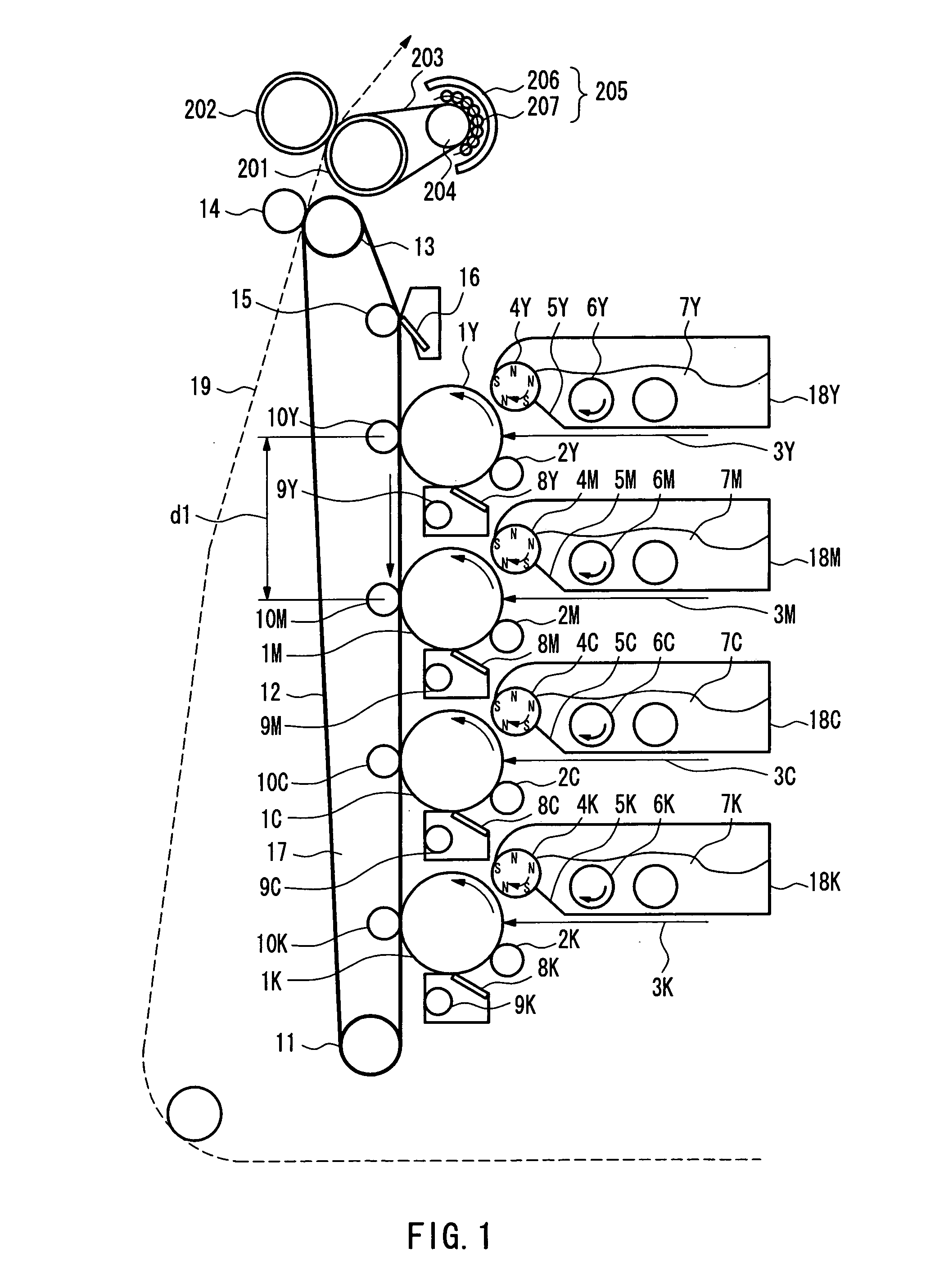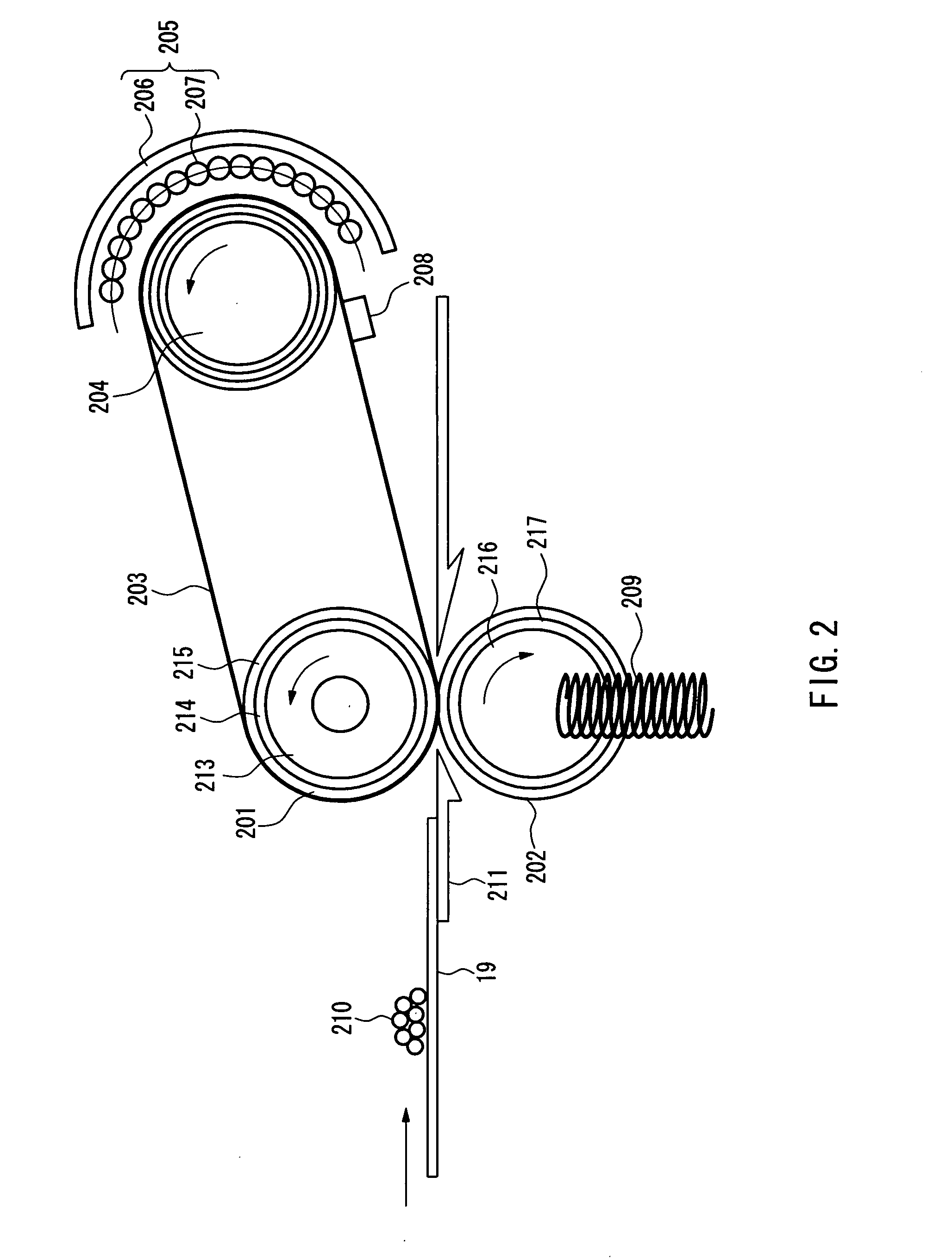Toner, process for producing toner, two-component developing agent and image forming apparatus
a technology of developing agent and developing agent, which is applied in the field of toner, process for producing toner, two-component developing agent and image forming apparatus, can solve the problems of poor color reproduction, light scattering on the surface or the inside of toner images, and affecting the original color of toner pigment, etc., and achieves low temperature fixability, long life, and high temperature offset resistance
- Summary
- Abstract
- Description
- Claims
- Application Information
AI Technical Summary
Benefits of technology
Problems solved by technology
Method used
Image
Examples
example
Carrier Producing Example 1
[0185] MnO (39.7 mol %), MgO (9.9 mol %), Fe2O3 (49.6 mol %), and SrO (0.8 mol %) were placed in a wet ball mill, and then were pulverized and mixed for 10 hours. The resultant mixture was dried, kept at 950° C. for 4 hours, and temporarily fired. This was pulverized for 24 hours in a wet ball mill, and then was granulated and dried by a spray dryer. The granulated substance was kept in an electric furnace at 1270° C. for 6 hours in an atmosphere having an oxygen concentration of 2%, and fully fired. The fired substance was ground and further classified, thus producing a core material of ferrite particles that had an average particle size of 50 μm and a saturation magnetization of 65 emu / g in an applied magnetic field of 3000 oersted.
[0186] Next, 250 g of polyorganosiloxane expressed by Formula (5) in which R1 and R2 are methyl groups, i.e., (CH3)2SiO2 / 2 unit is 15.4 mol % and Formula (6) in which R3 is a methyl group, i.e., CH3SiO3 / 2 unit is 84.6 mol % ...
example 5
Carrier Producing Example 5
[0191] A core material was produced in the same manner as the Carrier Producing Example 3 except that the amount of aminosilane coupling agent to be added was changed to 50 g, and a coating was applied, thus providing a carrier b1.
example 6
Carrier Producing Example 6
[0192] As a coating resin, 100 g of straight silicone (SR-2411 manufactured by Dow Corning Toray Silicone Co., Ltd.) was weighed in terms of solid content and dissolved in 300 cc of toluene solvent. Using a dip and dry coater, 10 kg of the ferrite particles were coated by stirring the resin coating solution for 20 minutes, and then were baked at 210° C. for 1 hour, providing a carrier b2.
PUM
 Login to View More
Login to View More Abstract
Description
Claims
Application Information
 Login to View More
Login to View More - R&D
- Intellectual Property
- Life Sciences
- Materials
- Tech Scout
- Unparalleled Data Quality
- Higher Quality Content
- 60% Fewer Hallucinations
Browse by: Latest US Patents, China's latest patents, Technical Efficacy Thesaurus, Application Domain, Technology Topic, Popular Technical Reports.
© 2025 PatSnap. All rights reserved.Legal|Privacy policy|Modern Slavery Act Transparency Statement|Sitemap|About US| Contact US: help@patsnap.com



